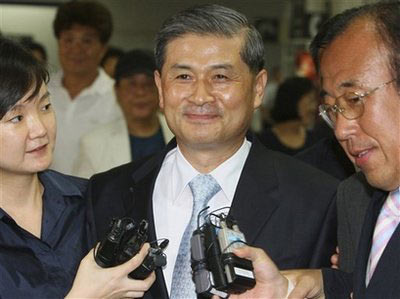'Stem cell hero' was asked to sit in prison
Prosecutors proposed a four-year prison sentence for Hwang Woo-suk, who was honored by the Korean media as a national hero through stem cell research.
Former professor Hwang became famous throughout the planet after claiming he had succeeded in creating stem cells from cloned human embryos in 2005. The American Time magazine ranked his research on the list. books of typical inventions of the year. But then an investigation committee of Seoul National University (where Hwang worked) discovered that his research data was fake.
During yesterday's trial, prosecutors said that Hwang had smeared the image of the country and the Korean scientific community. His fraudulent behavior harms other scientific studies in Korea.
The defendant made an apology for the stem cell scandal, but insisted he was not deliberately cheating. Hwang said that some young scientists in the research group deliberately faked data so that he believed the research was successful.

Hwang Woo-suk arrived at the Seoul court as a defendant on August 24.(Photo: AP)
Lee Bong-gu, one of Hwang's lawyers, told Reuters: 'Many people, including prosecutors, are trying to distort my client's precious scientific evidence .'
The trial of Hwang took place for 3 years and legal experts predicted that it could enter the fourth year. Many scientists have testified in court. Hwang supporters held many marches every time the court tried. They claim that Hwang is a talented and legal scientist and should give him the opportunity to correct mistakes.
Stem cells are the original type of cells, programmed to develop into many types of tissue in the body. In May 2005, Hwang's group announced in the American Journal of Science that they successfully developed stem cells capable of adapting to individual patients.
Accordingly, 11 " new generation " stem cell lines were born, in which each line was created by taking genetic material from the patient and placing it in the donor egg . Stem cells are produced with perfect compatibility with the patients themselves, and can be used to treat diseases without fear of rejection.
According to an article in Science magazine, Seoul National University scientists took DNA from volunteers' skin cells and inserted it into donor eggs that had no genetic material left. When this egg develops to the early stages of the embryonic period (about 6 days after transplantation), that means when they are just tiny cell spheres, people will " harvest " stem cells. When examining the finished stem cells in the laboratory, the team observed that they seemed to be perfectly compatible with individuals who donated DNA immunologically.
- Mexico focuses on promoting the creation of stem cell banks
- Be careful about stem cell therapy
- It was possible to transplant stem cells from one person to another
- What are stem cells? How advanced is medicine in this area?
- Japanese scientist and stem cell story
- The paradise and barrier of human embryonic stem cells
- Vietnamese doctors turned umbilical cord into a source of 6 billion stem cells
- Prisoners who have never escaped, prisoners who are released also do not want to go to prison
- LEARN ABOUT ORIGINAL CELL (Part 5)
- Stem cell therapy will help restore lung tissue
- The Nobel laureate of stem cells will cooperate with China
- LEARN ABOUT ORIGINAL CELL (Last part)
 Vietnam 5th Asian champion on fuel-efficient vehicles
Vietnam 5th Asian champion on fuel-efficient vehicles We can read all NASA studies completely free of charge
We can read all NASA studies completely free of charge Singer and songwriter Bob Dylan won the 2016 Nobel Prize for Literature
Singer and songwriter Bob Dylan won the 2016 Nobel Prize for Literature Scientific revolution in Asia
Scientific revolution in Asia Korea, Russia study the mammoth cloning
Korea, Russia study the mammoth cloning  'The germ cell case': Mr. Hwang Woo Suk received 2 years in prison
'The germ cell case': Mr. Hwang Woo Suk received 2 years in prison  South Korea: Again scandalizing scientific research
South Korea: Again scandalizing scientific research  Mr. Hwang Woo-suk was formally accused of embezzlement and deception
Mr. Hwang Woo-suk was formally accused of embezzlement and deception  Revoke Hwang Woo-suk's research license
Revoke Hwang Woo-suk's research license  Science magazine retracted the article about Mr. Hwang's research
Science magazine retracted the article about Mr. Hwang's research 